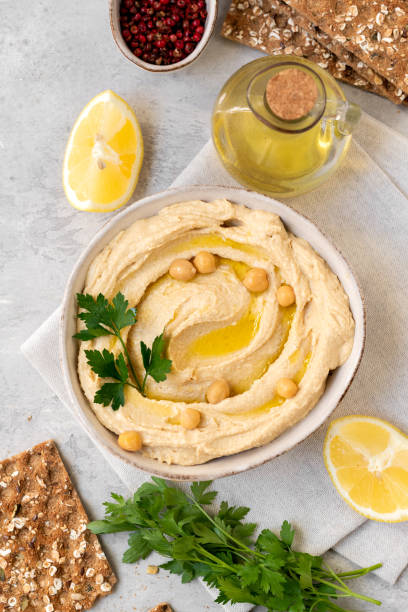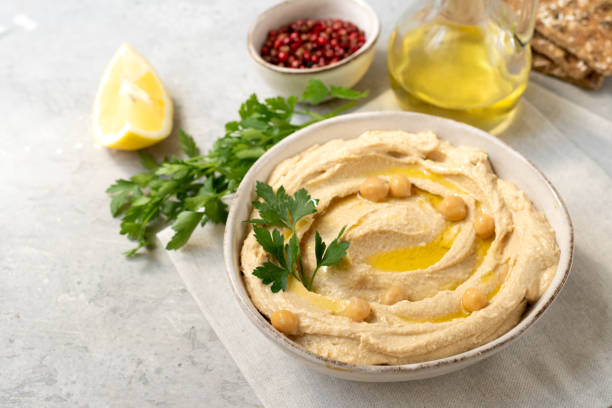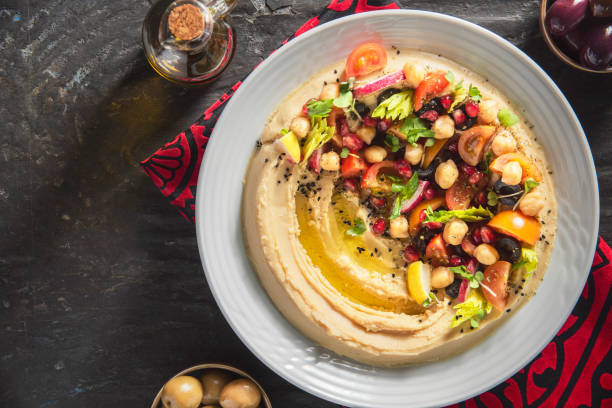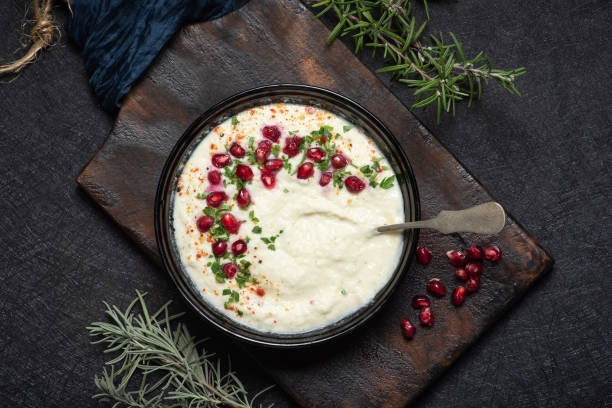Hummus Recipe Without Tahini: Deliciously Creamy and Easy
Hummus, a creamy and flavorful spread made from blended chickpeas, has a rich history that dates back to ancient Middle Eastern cuisine. Believed to have originated in regions such as Lebanon and Israel, this dish has transcended time and geography, becoming a beloved staple in kitchens worldwide. The versatility of hummus is notable, as it can be served as a dip, a spread, or even as a component of various complex dishes, making it prominent across Mediterranean, Middle Eastern, and even contemporary culinary traditions.
While traditional hummus recipes often call for tahini, a sesame seed paste that adds a distinctive flavor and creaminess, not everyone can enjoy this ingredient. Reasons such as allergies, dietary restrictions, cost, or simple unavailability can make tahini a challenging component for some. This has led to the creation of tahini-free alternatives that maintain the essence of classic hummus while being accessible to a wider audience. By exploring a hummus recipe without tahini, you can discover a delightful and satisfying version of this favorite dish that can accommodate various dietary needs without sacrificing taste or texture.

Introduction to Hummus
Hummus, a creamy and flavorful spread made from blended chickpeas, has a rich history that dates back to ancient Middle Eastern cuisine. Believed to have originated in regions such as Lebanon and Israel, this dish has transcended time and geography, becoming a beloved staple in kitchens worldwide. The versatility of hummus is notable, as it can be served as a dip, a spread, or even as a component of various complex dishes, making it prominent across Mediterranean, Middle Eastern, and even contemporary culinary traditions.
While traditional hummus recipes often call for tahini, a sesame seed paste that adds a distinctive flavor and creaminess, not everyone can enjoy this ingredient. Reasons such as allergies, dietary restrictions, cost, or simple unavailability can make tahini a challenging component for some. This has led to the creation of tahini-free alternatives that maintain the essence of classic hummus while being accessible to a wider audience. By exploring a hummus recipe without tahini, you can discover a delightful and satisfying version of this favorite dish that can accommodate various dietary needs without sacrificing taste or texture.
Benefits of Eating Hummus
Hummus is not only a delicious alternative to traditional spreads but also packs a nutritional punch. It’s high in protein thanks to its chickpea base, making it an excellent option for vegetarians and vegans looking to enhance their protein intake. Along with protein, hummus is rich in healthy fats from olive oil, which contribute to heart health. Additionally, the fiber content in chickpeas aids digestion, helping to maintain a healthy gut.
The health benefits of hummus extend beyond just its nutritional value. Regular consumption can help reduce the risk of chronic diseases such as heart disease and diabetes, thanks to its nutritious ingredients and low glycemic index. Incorporating hummus into your diet can contribute to overall wellness and help maintain energy levels throughout the day.
One of the most appealing aspects of hummus is its versatility. It can be enjoyed in numerous ways: as a snack with fresh vegetables, a spread on sandwiches or wraps, or even as a condiment for grilled meats and fish. This adaptability makes hummus a fantastic addition to a wide array of meal options, catering to various tastes and dietary preferences.

Hummus Variations
If you’re looking to elevate your tahini-free hummus experience, consider experimenting with flavored variations. These add unique tastes and vibrant colors to your dish, making it not only appetizing but also exciting to share with family and friends.
- Roasted Red Pepper Hummus: Blend in roasted red peppers to create a sweet and smoky version that pairs well with pita and fresh vegetables.
- Garlic and Herb Hummus: Infuse your hummus with fresh herbs such as parsley or basil and add garlic for an aromatic touch.
- Spicy Hummus: Add a kick to your hummus by incorporating jalapeños or crushed red pepper flakes for a spicy twist.
To enhance these flavors, consider including additional ingredients like fresh lemon juice, aromatic spices such as cumin or paprika, or even roasted vegetables like zucchini or eggplant. These additions can substantially elevate the overall taste profile while staying true to the tahini-free essence of the dish.
Detailed Recipe Section: Hummus Without Tahini
Ingredients
- Base Ingredients:
- 1 can of chickpeas (or 1.5 cups cooked chickpeas)
- 2-3 tablespoons of olive oil
- 2 cloves of garlic, minced
- 3 tablespoons of fresh lemon juice
- Optional Add-ins:
- 1 teaspoon ground cumin
- 1 teaspoon paprika
- Salt to taste
- Fresh herbs (e.g., parsley, cilantro) for garnish
Instructions
- Preparation: If you’re using dried chickpeas, soak them overnight and then cook until tender. Canned chickpeas are already cooked, so they can be used directly.
- Cooking the Garlic: For a milder taste, you can sauté minced garlic in a small amount of olive oil until fragrant, or roast garlic bulbs for a sweeter flavor. Allow to cool before adding to the hummus.
- Blending Process: In a food processor, combine the chickpeas, olive oil, sautéed or roasted garlic, and fresh lemon juice. Process until smooth. For the best texture, slowly add in additional ingredients while blending.
- Adjusting Consistency: If the hummus is too thick, gradually add water or more olive oil to reach your desired level of creaminess. Blend until thoroughly mixed.
Tips for Perfect Hummus
- Texture Tips: Blend for a sufficient amount of time to achieve a silky smooth texture—this may take 2-3 minutes in total.
- Flavor Balancing: Be sure to taste as you mix, adjusting flavors with more salt, lemon juice, or spices until you achieve a harmonious balance.
- Serving Suggestions: Serve your hummus with warm pita bread, fresh vegetables (like carrots, cucumbers, and bell peppers), or use it as a spread on sandwiches and wraps.
Comparison to Traditional Hummus
While traditional hummus is renowned for its rich flavor profile largely derived from tahini, the tahini-free version holds its own with a slightly different texture and taste. The absence of tahini makes the base chickpeas more prominent, allowing them to shine alongside the well-balanced flavors of olive oil and garlic.
Nutritionally, the tahini-free hummus still offers substantial health benefits, including high protein content from the chickpeas and healthy fats from olive oil. Thus, it serves as a viable option for those seeking a lighter hummus while still enjoying the classic taste.
FAQs Section
- Can I make hummus without olive oil? Yes, you can substitute olive oil with aquafaba (the liquid from canned chickpeas) or water for a lighter version.
- What can I substitute for tahini? Sunflower seed butter, greek yogurt, or even avocado can serve as excellent alternatives to tahini, giving your hummus a unique twist.
- How do I store hummus? Keep hummus in an airtight container in the refrigerator. It can last up to one week.
- How long can I keep homemade hummus? Homemade hummus is best consumed within a week for optimal freshness and flavor.
- Can I use different beans for hummus? Yes, you can experiment with other beans like white beans or black beans to create different flavor profiles.
Conclusion
Hummus without tahini offers a delightful alternative that maintains the dish’s traditional charm while catering to various dietary needs. With its versatile applications and numerous health benefits, hummus can easily be incorporated into everyday meals. Don’t hesitate to explore new flavors and variations, making it a joyful experience in your kitchen. Feedback and suggestions are always welcome as you dive into the world of tahini-free hummus!

hummus recipe without tahini
Equipment
- 1 food processor or blender
- 1 measuring cups
- 1 measuring spoons
- 1 rubber spatula
- 1 serving bowl
Ingredients
- 1 can (15 oz) chickpeas (garbanzo beans) drained and rinsed.
- 1/4 cup olive oil
- 1/4 cup lemon juice about 1 large lemon.
- 2 cloves garlic minced.
- 1/2 teaspoon ground cumin
- 1/2 teaspoon salt
- 2 to 4 tablespoons water as needed for consistency.
- optional paprika or chopped parsley for garnish.
Instructions
- In the food processor or blender, combine the drained chickpeas, olive oil, lemon juice, minced garlic, ground cumin, and salt.
- Blend the mixture until smooth, stopping to scrape down the sides with a rubber spatula as needed.
- Gradually add water, one tablespoon at a time, while blending, until you reach your desired creamy consistency.
- Taste the hummus and adjust the seasoning if necessary, adding more salt or lemon juice to suit your preference.
- Transfer the hummus to a serving bowl and smooth the top with the back of a spoon.
- If desired, drizzle a little olive oil on top and sprinkle with paprika or chopped parsley for garnish.







